Of all the types of flooring available, wood with the perfect finish is still the most popular. And oak floorboards are gorgeous as well as fashionable. But pine wood flooring is another strong contender in the beauty stakes, a softwood that’s been used to make floorboards for centuries and a feature of many old homes across Britain.
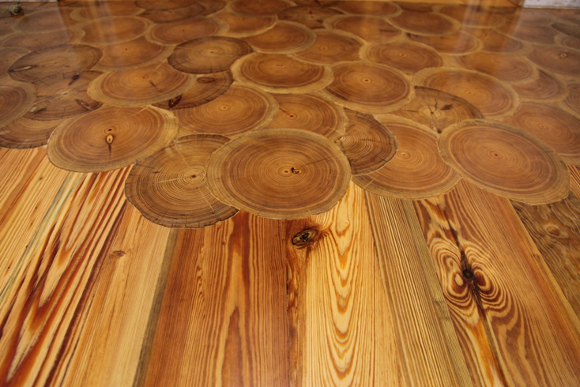
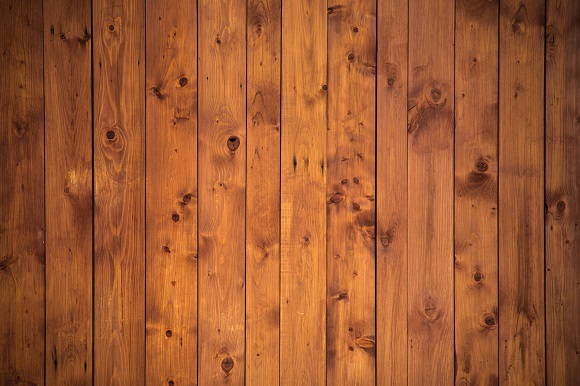
We’ve taken several long, detailed looks at oak flooring, furniture and doors. Now it’s time to explore the wonderful world of pine. If you have a pine floor that needs attention, or you’ve been tasked with getting one in apple-pie order for someone else, here’s everything you need to know.
Types of pine
Pine, also sometimes called redwood, is cheaper and more common than traditional hardwoods, ranging from almost white through various yellow shades to a deep, rich red. For a softwood it’s often remarkably resilient and long-lasting, especially in the context of well looked after pine floors.
Pinus is the species we see most in UK and EU plantations. It’s useful for all sorts of utility work, a common wood for beams, flooring and structural purposes. But that’s just the start of it. There are a whole load of different types of pine trees found in the wild, so many in fact that the Wood Database website’s impressively long list is far too detailed to repeat here.
If you’re interested in the similarities and differences between soft pines and hard pines, and those within each group, you can’t beat the Wood Database pine page, an excellent resource.
Horses for courses – The pine flooring aesthetic
There’s a variety of flooring ideas and opinions concerning keeping wooden floors looking good. Some concerns involve floor maintenance, as some floors require little in the way of maintenance, while others require plenty of elbow grease and attention. And the choice is often a matter of aesthetics.
One of the best things about wood flooring is that it changes, going through all sorts of fascinating stages over time, depending on its type and location, with an equally wide range of end results. And every stage of the ageing process has its own beauty.
You might love the hundred year (or much older) patina your old pine boards have acquired through generations of wear. It might be stained and dirty, uneven and bent, sometimes more or less black. But to you it’s perfect – a living piece of history marking decades or even centuries of human use. And that’s fine. If it has lasted this long in one piece, it might well last a great deal longer without falling apart on you.
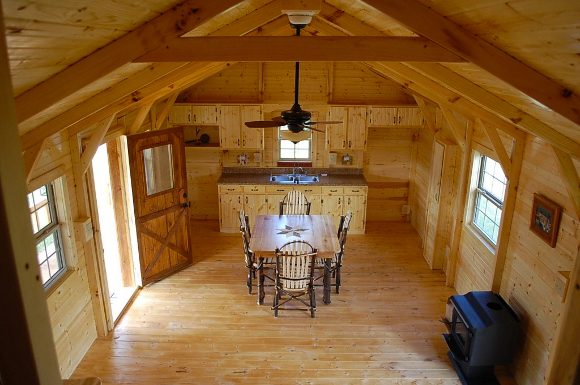
Your floor might be reasonably worn, part way between new and aged. You might adore the effect – the real shabby chic ideal – or you may prefer to get rid of the muck and repair any damage, giving it a whole new lease of life as well as a smooth, contemporary look.
A brand new pine floor, on the other hand, can look pretty raw. The paler it is, the newer and less settled-in it looks. You might want to use a wood dye to create a subtler, less in-your-face effect, calming the brightness down a bit, and if it hasn’t already been protected, you’ll want to add a finishing oil or good quality varnish.
How pine changes over time
The colour is one thing. The condition of old pine floors is another. Old boards can cup or arch over time, each board curling up at the edges, which means when you try to sand them you tend to get a thin sanded strip down the middle of each board at the high point, which widens on each pass of the sander as the boards are slowly levelled by the sanding process.
When you sand old pine boards back to the wood they can look very pale, even colourless. But don’t worry. The minute you apply a clear wood finishing product like an oil or varnish, that warm, attractive natural golden colour will come flooding through.
Testing the colour of your floorboards before finishing them
This change in colour is so dramatic that it’s usually best to test how it’ll look finished before choosing an oil or varnish. Luckily it’s easy. All you do is rub the surface with a damp – not wet – cloth and you get the exact same effect as oiling or varnishing – the colour suddenly shines through. Once you know what’s what, you can choose your finish: either something to enhance the natural colour or a colourless product.
What if you want to get rid of that bright orange/gold colour?
Orange or golden pine isn’t everyone’s cup of tea. And that’s the effect you can get from a standard clear oil or varnish – as time passes it can turn a deeper orange/gold, even a nasty brown. If your pine floor has gone a funny colour, you can always sand the old finish off and replace it with a product that won’t change colour as it ages.
If you’re looking to retain the natural appearance of freshly sanded boards, pine or oak, Osmo Polyx Oil Raw and Fiddes Hard Wax Oil Natural are both great products for defusing and countering the gold / orange colour you sometimes get.
- Osmo Polyx Oil Raw (3044) is made with natural oils and waxes, gives excellent protection and durability and is specifically formulated to retain the ‘natural’ look of wood. It counteracts the damp-looking darkening effect and grain enhancement you typically get with standard clear oils or varnishes.
- Fiddes Hard Wax Oil Natural also keeps wood looking as natural and unaltered in colour as possible and dries to a clear, satin-matt finish. It’s perfect for light coloured woods like pine, spruce and oak.
Pine wood floor refinishing – Varnish or oil?
What’s best, an oil or a varnish? The protective qualities are much the same. But oil and varnish come with different types of maintenance, and to a great extent your choice depends on the amount of wear and tear the floor receives.
- Using a wooden floor varnish tends to provide better durability and less maintenance, but you’ll need to re-sand the entire floor back to bare wood when the varnish eventually gets damaged and worn. How long this takes depends on the type and quality of the varnish and how much wear your floor is subjected to. It could be every year if you have pets, visitors and kids running in and out all the time. It could be five years or more if your home life is a lot quieter or you’ve covered the floor with rugs.
- Using a wooden floor oil on the other hand requires maintenance, usually every couple of years, but it won’t flake, crack or peel off. It looks better than varnish as it begins to wear and is very easy to patch repair if it becomes worn in specific areas, unlike varnish. When an oiled floor starts to look like its past its best, simply clean with a suitable floor cleaner to remove any marks, scuffs or stains, then re-apply a thin coat of oil, and “Voila!” it’s just like new again. Even bad scuffs, stains, marks and light scratches can be fixed by lightly sanding the area and re-applying a fresh coat of oil.
A tough varnish, by the way, won’t make the flooring itself hard. If you drop something heavy on the floor, the wood will still dent even though the varnish stays intact.
We have put together this handy video helping you to understand the key difference between a varnish and oil, as well as application techniques.
Need help with your pine floorboards?
For more information about interior floor finishes and treatments, contact our team of resident experts who are always on hand to help with project advice and product recommendations. Alternatively, see our floor finishes FAQ page which covers many of the most commonly asked questions about floor finishes.
We love to see before, during and after photos of any wood finishing project. If you would like to share your decking project pictures with us, you can either send us some photos or share on our Facebook, Twitter, Pinterest or Instagram pages.


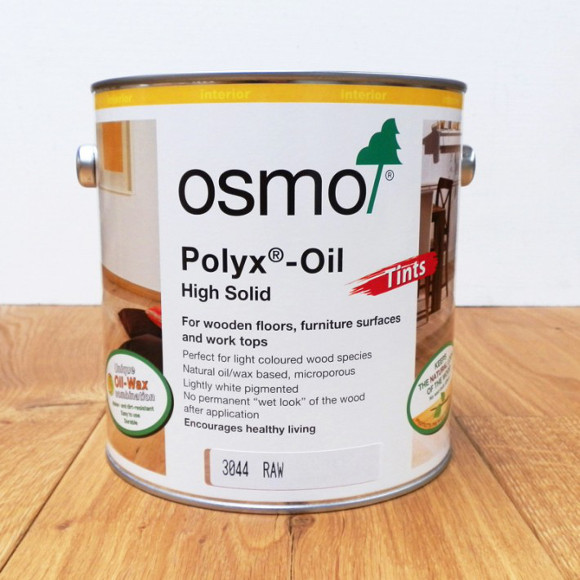


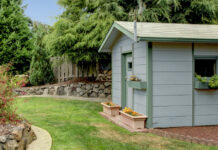
Hi, I wonder if you could please help?
I have a 1930s pine floor which I’ve treated with Fiddes Satin Finish Hard Wax Oil in Natural. I think it looks great and want to repeat it on the stairs. However, there is some surface damage that needs filling. What’s the best method / product to achieve a reasonably even finish once treated? (Doesn’t have to be flawless, just a close-ish match will be nice)
Cheers
Hi,
Please have a look at this interior wood filler which is designed to take oil. Try and match the colour to the natural colour of the wood rather than just opting for Pine.
https://www.wood-finishes-direct.com/product/osmo-wood-filler
Hope that helps!
Good morning,
We recently purchased a log home with pine tongue and groove 8 inch flooring, it’s in bad shape so we are tearing it up and putting new tongue and groove down, we are doing it ourselves, my question is for the polyurethane, what do you use to apply it? How many quotes, and what’s the best product? Any advice is great, this is new to us. Thank you
Hello Krista,
Thank you for getting in touch with your question. A good option to consider for a domestic floor is the Manns Extra Tough Floor Varnish its a very durable product and comes in four sheen levels to get the desired shine. Plus has the bonus of sample sizes for test areas to ensure you are getting the desired result. On new wood three coats are going to be required for the best result. If you take a look at the product details and if you have any questions at all please do get in touch via our contact us page.
Kind Regards Samantha.
I have old pine flooring throughout my house. Looking to add on and wondering if the untreated pine wood floor planks from the attic would work? They have been up there for over 200 years. I’m assuming we can use them but wanted to make sure that the heat and cold up there haven’t dried them out over the years. They are in fabulous condition since no one is ever up there. They are flat with no warping. The old house is solid!
Good Afternoon Christi,
I would say its quite possible to repurpose those boards, although the ageing process of those versus the floor boards in the rest of the house will be different. You may find that if you apply a product the result on floor boards versus the attic boards could be variable. Test areas will help to determine this and please do not hesitate to get in touch via our contact us page.
Kind Regards Samantha.
Hey there,
So impressed with all the incredible help on this blog post. Hoping you may be able to help me too, I have recently sanded back very old pine floors. I went on to apply a fiddles hard wax oil tint, I love the colour however it is appearing patchy in areas. Will a second coat help with this? Or perhaps another product that will help blend?
Thank you so much in advance,
Ainslie
Hello Ainslie,
Thank you for your question and my apologies for the delay in getting back to you. Victorian Pine, reclaimed floor boards and anything with a long history, can be unpredictable when it comes to finishes and especially those that penetrate the woods surface such as stains or oils. As they soak into the wood they can highlight the flaws that are otherwise invisible.
A more intense sanding, before application, can help to reduce the patchiness of the wood however there are no guarantees that this will give you a totally even result, it will be the best option. The application of a second coat of oil is not likely to improve the overall patchy result that you currently have.
If you need some more help and advice please do not hesitate to get in touch via our contact us page with the above details and any information about the preparation process you have used.
Kind Regards Samantha.
Hello:
I have bought a century home that has pine floors on the second floor. I want to keep the patina it has, so was wondering if I could give it a light sanding, and refinish with a vanish?
Thanks,
Natalie
Hello Natalie,
Thank you for your question. It is difficult to give a definitive answer to this, as aged Pine Floor boards can be unpredictable and how well a varnish will adhere can depend on what has previously been used and remains on the wood currently.
There are some definite no no’s, if the wood has been waxed or polished in the past a varnish is unlikely to adhere unless all previous product is removed, and if the floor has been oiled this could also create some issues, depending on how old the oil was and what type.
That said however it is possible to do this and the best way to tell is with a few small test areas. I recommend more than one as the wood may have had variable coverings or products applied over the years and so could react differently in some areas.
I can recommend taking a look at the and there are sample sizes available for those test areas first.
For more help and advice please do feel free to get in touch via our contact us page.
I am currently renovating a chapel with an an attached house. The upstairs of the house was originally the Sunday School and there was no access from downstairs. I have cut out a stair well, and in removing sections of floorboard, I have found initials stamped into the end of a board (HC).
Would these initials be the name of the carpenter or the timber supplier? Or maybe something else.
Kind regards, Bob
Good Afternoon,
An interesting find for you, and it sounds like an interesting renovation, for sure. I am sorry however, I would not have any clue about what they may indicate or who would have put them there. I would recommend getting some photos shared on the wood work forums and see if anyone of there may recognise or be able to make any further suggestions for you.
Good Luck in your search Samantha.
Hi,
I have new pine floors, we finished them last August. But I hate them cause I did not stain them. They put sealer and a cheap oil based poly and that’s it. It’s bright yellow and orange. I wish I stained them.
I’m having a company come to sand the floors. Then I will do the rest. I plan to water pop them and leave that overnight too dry. Then I will stain them with an oil based medium brown color. When I did the sample, I had to wait a few hours and do a second coat of stain as the first wasn’t enough for me. I will then finish it with a water based poly after the stain as cured.
Is this ok or am I missing any crucial steps? Do I need to use sealer or do anything for the knots or anything else?
Also, I do’nt want super orange floors. I’m ok with a bit of a warmth coming through the medium brown color.
Hello Ava,
It sounds like you have been looking into what you need to do and have a pretty good idea. My only bit of advice would be to try a small test area with full application first. Popping the grain will add texture to the wood and will have an impact on how much stain will be absorbed and the colour to be achieved. If you do not want the wood to be too textured you will need to sand between coats.
The orange and yellow more often comes from the wood type, application of a product, particularly one that penetrates the wood, highlights the natural tones and so to bring down those colours a little, sometimes a green based stain is required, again test areas are the best way to tell for sure. And one other pointer, sometimes the colour will be perfect and then you apply a varnish or oil and it changes the colour, or highlights something in the wood that wasn’t not previously visible. This is why your full test area is vital.
I hope that helps and if you have any questions at all or want to share the result of you project with us please do get in touch via our contact us page.
Kind regards Samantha.
I have old pitch pine for past 35 years which originally came from beams from an old church roof. So it is very old and dried out I would have thought. It is quite heavily marked with wear. More importantly it has darkened and went that orange colour which we want to get rid of for something lighter and varnish it with something which will prevent the pitch pine from going darker and turning that orange colour in the future.
Someone told me that I should never use water based products and water based varnish (oil based varnish instead) on pitch pine because of the amounts of resins it holds no matter how old it is. Is this correct? The water based varnish prevents yellowing and darkening as much and this is what I would like to use. Am I at risk of destroying the wood by using stripper, sanding and water based products?
Good Afternoon Ann,
Thank you for getting in touch with your enquiry. Old Pine can be difficult and un predictable to work with. Even with all the right preparation the result is not always as expected, or a flaw can show up half way through application.
I have not come across the idea that water based can not be used because of the resins, although I am better verse in wood finishing products than wood, but I suspect resins reduce over time even in knotted areas, the overall amount of resin that leeches out should reduce.
Water based is a product that I would recommend if you want to use a varnish, as this will change the overall appearance of the wood less than solvent or oil based products will. And water based products are as durable and equal to the older solvent based products, for sure,these days. And you could take a look at the Manns Extra Tough Floor Varnish, samples are available for test areas.
So sand back to bare wood,sanding will lighten and restore the woods appearance, wipe over with Methylated Spirits first, paying particular attention to any knots, this will remove any surface resins and aid application, it could also highlight any flaws in the wood that may need dealing with.
Then try your test area first to ensure you like the result that will be achieved, and once you are happy you are able to apply your first full coat. Good ventilation and air flow will help with curing.
I hope that helps and if you have any questions at all please do not hesitate to get in touch via our contact us page.
Kind regards Samantha.
Hi we have been refurbishing our house and in one room some of the parana pine boards could not be saved and the builders have replaced the damaged boards with new light pine. Am I right in saying after a sanding I will be able to stain all the boards with a uniform colour and then oil ?
Thank you for getting in touch with your enquiry. We often get asked about matching new boards with old ones and whether it is possible to get an even all over result. The new and old wood are likely to give a different result when a stain is applied and this is because the structure of the wood changes over time, sometimes only a little and sometimes a lot, it will depend on the history of the wood.
The variation will have an impact on how much of the product is taken up into the wood, this is turn effects the colour result achieved. So the first thing to do is try some test areas with the products you are looking to use. Stains such as Manns Classic Pine Stain are good options as they are very versatile, you are able to apply as many or as few coats as you want, you can intermix to create a new colour and you can add water to lighten, so there is lots of scope to get the different boards to match with this product.
When you are testing for colours you do need to add the top coat product also as this can change the appearance slightly too. Another option to look at is a coloured oil which will be easier as it is colour and protect with two thin coats. If the old and new wood are fairly close then this may keep the project more simple for you and I would recommend the Fiddes Hard Wax Oil Tints or the Osmo Polyx Oil Tints Sample sachets are available with all of these products.
Feel free to get back to me via our contact us page if you have any questions.
Kind regards Samantha.